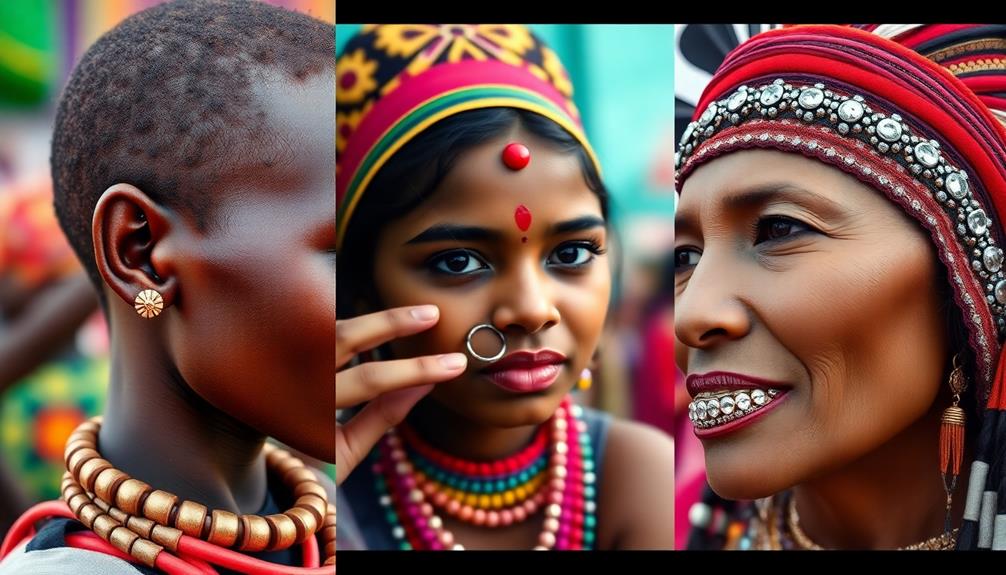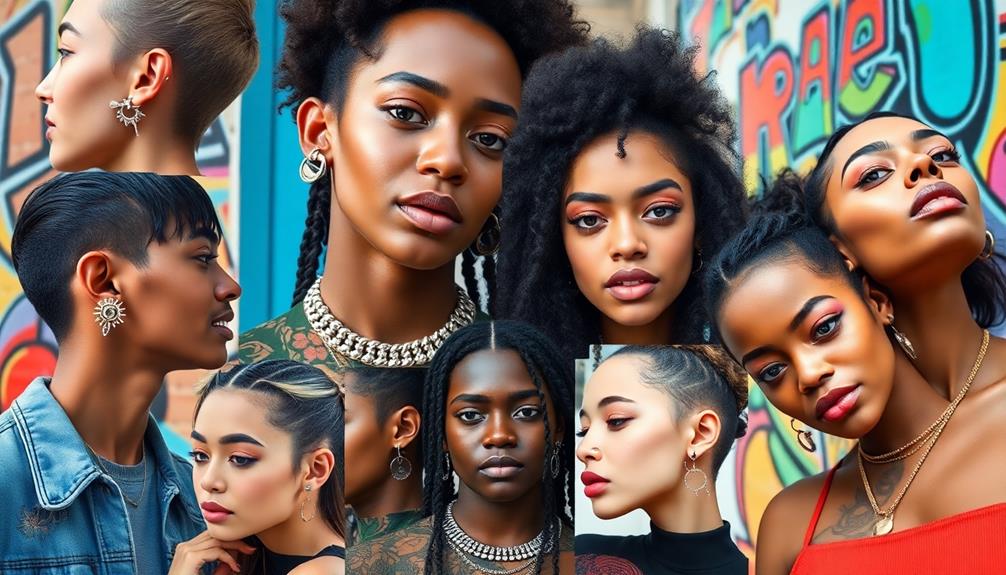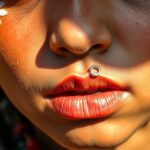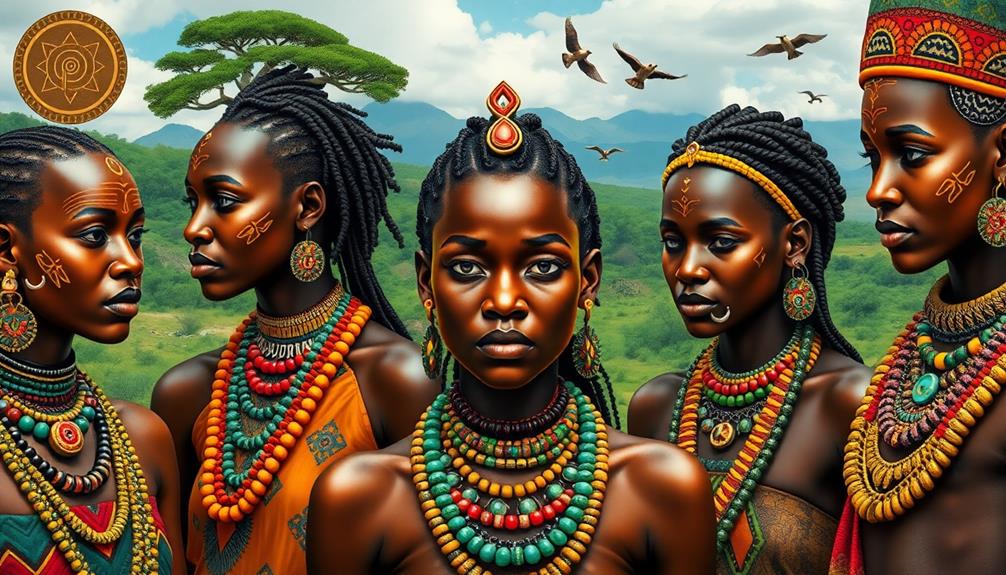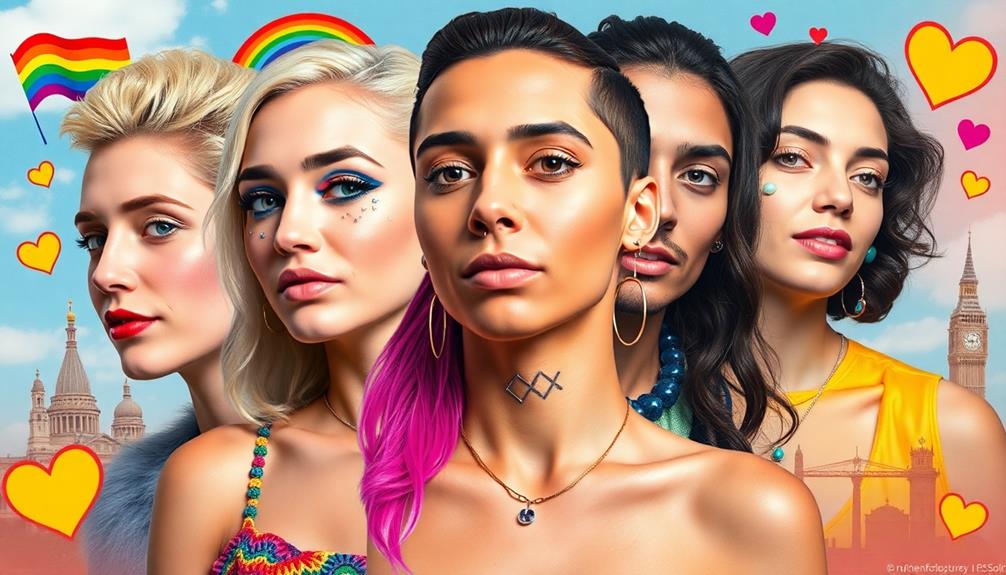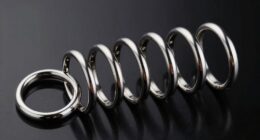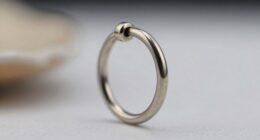Piercings are significant in coming-of-age rituals, representing key life changes and cultural identity. In many cultures, they symbolize maturity and readiness for adult responsibilities. For instance, Maasai ear stretching marks the change to adulthood, while nose piercings in India often indicate marital readiness. Each piercing tells a unique story, connecting you to your heritage and community values. Today, modern interpretations continue to blend traditional meanings with personal expression, showcasing individuality. Their enduring importance reflects your journey through life. Discovering the deeper connections behind these rituals can reveal even more fascinating insights into human culture and identity.
Key Takeaways
- Piercings serve as significant rites of passage, marking transitions into adulthood and personal growth in various cultures.
- Different cultures utilize unique piercing practices, such as ear stretching among the Maasai and lip plates among the Kayapo, reflecting societal values.
- Modern interpretations of traditional piercing rituals highlight individuality while honoring cultural heritage, particularly among younger generations.
- Piercings symbolize personal identity and community ties, enhancing self-expression and connection to ancestral roots during coming-of-age ceremonies.
- Health and safety considerations are crucial for a smooth piercing experience, emphasizing proper aftercare and infection prevention.
Historical Context of Piercings
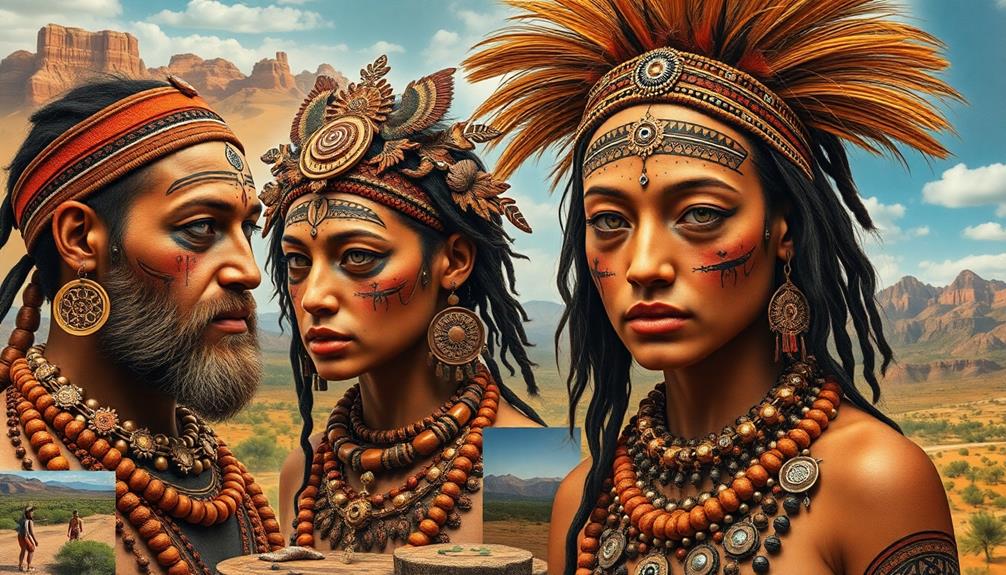
Piercings have long held significant meaning in various cultures, serving as powerful symbols in coming-of-age rituals. The historical context of piercings reveals their deep-rooted cultural significance.
For instance, in several African tribes, ear stretching is a common rite of passage that signifies maturity and strength. The Maasai people of East Africa have a specific practice where young boys undergo ear piercings and stretching, marking their change into manhood.
Similarly, in certain indigenous cultures in Mesoamerica, lip piercings and labrets symbolize beauty and readiness for adulthood. These practices not only beautify but also serve as crucial markers of one's journey into a new life stage.
Historical accounts show that even ancient Egyptians adorned themselves with piercings as part of their cultural rites, often linking them to societal status and maturity.
Throughout history, piercings have been utilized as significant markers, reflecting the values and beliefs of various cultures. Each piercing tells a story, connecting individuals to their heritage and highlighting their personal growth as they navigate the transformative journey of life.
Understanding this historical context enriches your appreciation of piercings as essential components of coming-of-age rituals.
Cultural Variations in Rituals
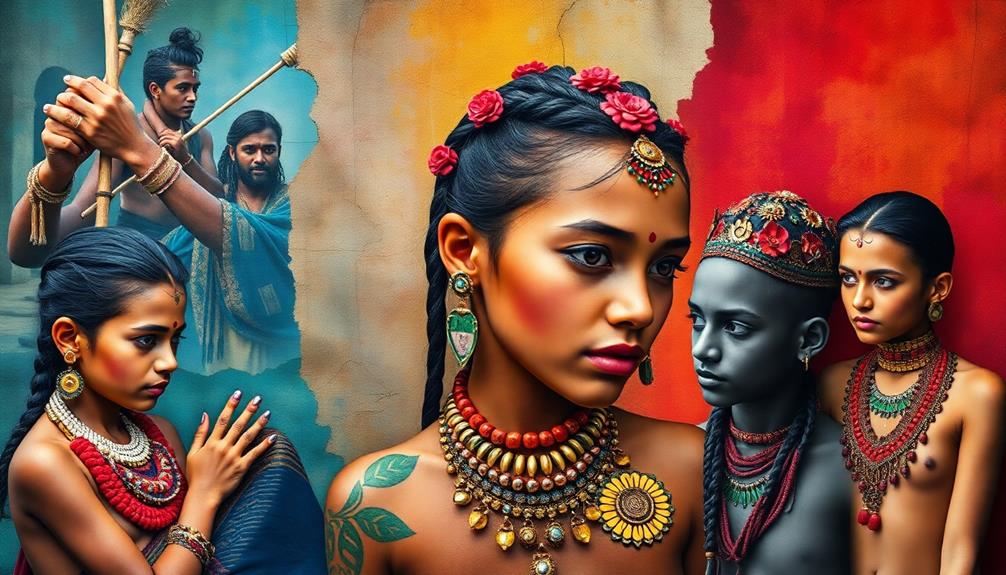
When exploring cultural variations in coming-of-age rituals, you'll find that piercings carry deep historical significance across different societies.
From the ear stretching of Maasai boys to the lip plates of the Kayapo, each practice reflects unique values and beliefs.
Even in modern times, these traditions evolve, showing how the meanings behind piercings can shift while still honoring their roots.
Historical Significance of Piercings
Throughout history, various cultures have embraced piercings as powerful symbols of identity and metamorphosis. The historical significance of body piercings is evident in diverse coming-of-age rituals.
For example, among the Maasai, ear stretching marks a young boy's change into adulthood, signifying maturity and new responsibilities. In the Aztec and Mayan civilizations, tongue piercings played a vital role in religious rituals and blood-letting ceremonies, representing significant spiritual milestones.
In India, nose piercings aren't just fashion statements; they hold deep cultural identity, often performed during coming-of-age ceremonies to denote a woman's maturity and readiness for marriage.
Similarly, in certain African tribes, lip stretching begins well before marriage, showcasing a person's preparedness for adult responsibilities while enhancing beauty standards.
These body piercings are more than mere adornments; they connect individuals to their heritage and signify important life changes.
The rituals surrounding these practices allow you to embrace your cultural identity while marking your journey into adulthood. Whether it's ear stretching or tongue piercings, each act tells a unique story rooted in tradition and significance.
Rituals in Indigenous Cultures
In many Indigenous cultures, body piercings serve as profound rituals that mark important passages into adulthood. For instance, the Maasai of East Africa practice ear stretching and piercings during their coming-of-age ceremonies, symbolizing maturity and the shift into adult roles.
Similarly, among the Kayapo people of Brazil, young girls undergo lip piercing and insert labrets, believed to connect them with ancestral spirits and signify beauty.
Inuit cultures also perform piercing rituals for both genders to celebrate transitions into adulthood, often incorporating feasting and storytelling that reinforce cultural identity.
Among Native American tribes like the Lakota, vision quests may involve body piercings as a means of spiritual purification and personal transformation, helping adolescents forge a deeper spiritual connection with their community.
Moreover, the Aztec civilization utilized tongue piercings in religious rituals, where bloodletting was seen as a way to please the gods and demonstrate dedication to both community and spiritual growth.
Through these diverse practices, piercings embody not just personal milestones but also the rich tapestry of cultural heritage and identity in Indigenous cultures, reinforcing the significance of these coming-of-age rituals.
Modern Interpretations of Traditions
As cultural dynamics shift, modern interpretations of traditional piercing rituals reveal how these practices adapt to contemporary values. You might notice that piercings once tied to specific rites of passage now reflect personal values and modern trends. For example, young people today often embrace ear and nose piercings, drawing inspiration from their ancestors while simultaneously expressing their individuality.
Here's a glimpse into how traditional piercing practices are evolving:
| Tradition | Modern Interpretation | Cultural Significance |
|---|---|---|
| Maasai ear stretching | Ear gauges for self-expression | Marks maturity and strength |
| African lip stretching | Fashion statements | Links to societal expectations |
| Aztec tongue piercings | Spiritual and artistic flair | Connection to heritage and deities |
| Indian nose piercings | Wedding adornments | Signifies adult roles in society |
This resurgence highlights a growing appreciation for the cultural significance of piercings. It's about more than aesthetics; it's about connecting with your roots while traversing the complexities of modern identity. As you explore your own piercing journey, consider how these traditions resonate with your life today.
Symbolism of Piercings in Society
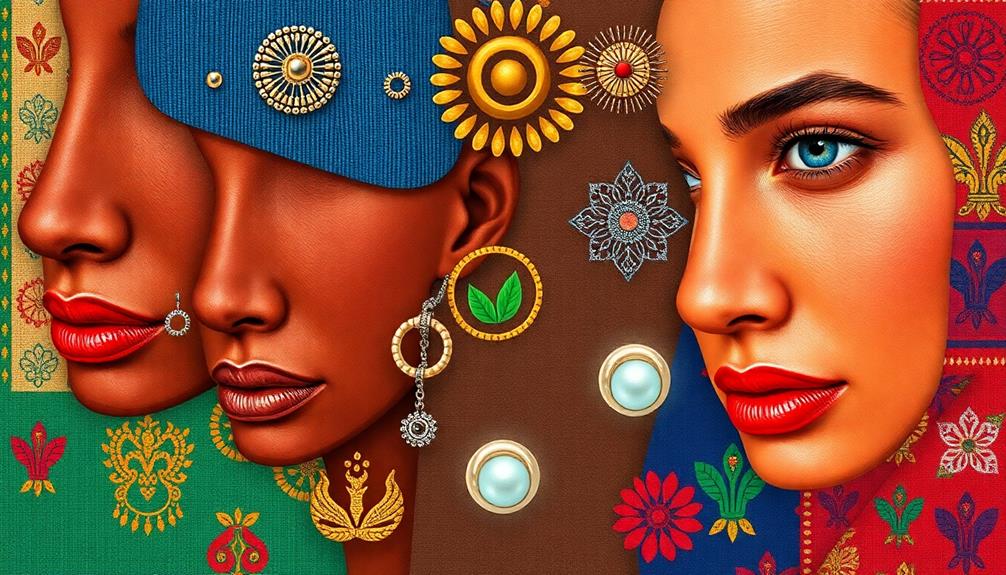
Piercings often carry deep symbolism in various societies, marking significant life changes and personal identities. For many cultures, these body modifications serve as rites of passage.
Take the Maasai, for example; ear stretching represents maturity and the shift into adulthood. In Aztec and Mayan societies, tongue piercings during religious rituals reflect spiritual beliefs and the importance of sacrifice, showcasing how piercings can intertwine with cultural practices.
In India, a nose piercing often signifies a woman's beauty and marital status, marking her entry into womanhood. Meanwhile, among certain African tribes, lip stretching begins at a young age, indicating readiness for marriage and connecting to dowry traditions, highlighting the social significance of these modifications.
Historically, piercings have also served as status symbols, such as the elaborate earrings worn by ancient Egyptian royalty, which represent societal values and identity.
However, it's crucial to approach these practices with respect, being aware of cultural appropriation. Understanding the depth of symbolism behind piercings can foster appreciation for the diverse ways societies express identity and progress through life's stages.
Coming-of-Age Ceremonies Around the World
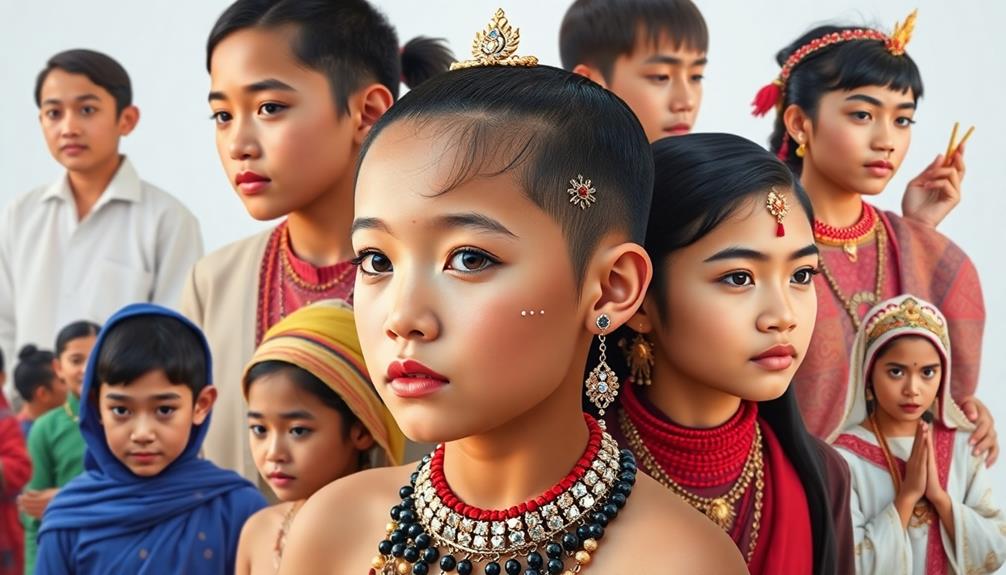
Coming-of-age ceremonies around the globe mark a pivotal moment in an individual's life, celebrating their passage into adulthood. In many Indigenous cultures, like the Maasai of East Africa, ear stretching serves as a traditional ritual for young boys, symbolizing their maturity and readiness for adult responsibilities.
Similarly, the Kayapo people of Brazil incorporate lip plates during adolescence, emphasizing the significance of body modifications as a link to cultural identity and ancestry.
In India, girls often undergo nose piercings as part of their coming-of-age ceremonies, intertwining beauty and femininity with cultural heritage.
The Aztec civilization took this further with tongue piercings, where blood-letting acted as a spiritual offering to deities, marking a vital change in their lives.
Various tribal societies, including those in New Guinea, utilize piercings as initiation markers. Specific designs and placements of these piercings indicate an individual's status within the community after successfully completing their coming-of-age rituals.
Each of these traditional practices highlights the profound significance of body modifications in the journey from childhood to adulthood, serving as a visual representation of personal and cultural identity.
Health and Safety Considerations
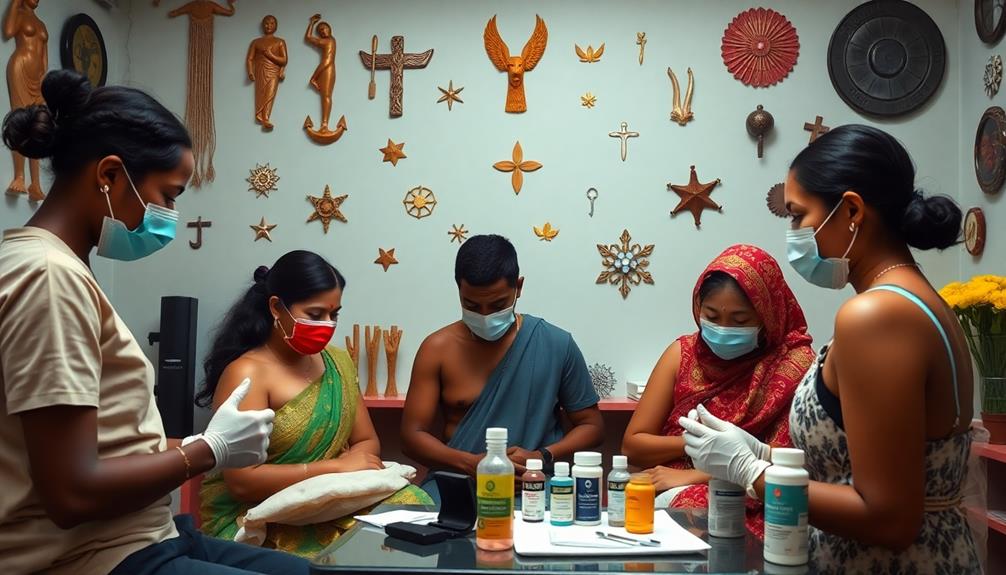
When you get a piercing, being aware of infection risks is vital for a smooth healing process. Proper aftercare is critical to prevent complications, as regular cleaning and avoiding irritants can greatly reduce the chances of infection.
You'll need to follow safe aftercare practices, like cleaning your piercing regularly and avoiding touching it with dirty hands. Staying vigilant and monitoring for any signs of infection can help guarantee your piercing experience remains safe and enjoyable.
For more details on piercing care and hygiene, consider following best practices recommended by professionals.
Infection Risk Awareness
Getting a new piercing can be an exciting experience, but it's important to be aware of the infection risks involved. Proper aftercare is critical; inadequate care can lead to infections, which are a common cause of complications. Maintaining cleanliness is essential, as touching your piercing with unwashed hands or using contaminated jewelry can greatly increase your risk of infection.
Here are some key points to remember:
- Choose hypoallergenic materials like titanium or surgical steel to avoid allergic reactions that can lead to inflammation and infection.
- Monitor your piercing site regularly for signs of redness, swelling, or discharge.
- Be aware that healing times vary; earlobe piercings may take 4 to 6 weeks, while cartilage or body piercings can take several months.
Neglecting care during the healing process can prolong recovery and increase the chances of complications.
If you notice any concerning symptoms, seek professional help promptly.
Safe Aftercare Practices
Guaranteeing the health and safety of your new piercing requires diligent aftercare practices. Proper aftercare is vital to prevent infection and promote healing, so make it a habit to clean your piercing 2-4 times daily.
Use unscented antibacterial soap, saline solution, or Epsom salt mixed in warm water. Avoid products like Neosporin, Vaseline, alcohol, or peroxide, as they can irritate your skin and delay healing.
Before touching or cleaning your piercing, always wash your hands to minimize the risk of introducing bacteria. It's best to wait at least two weeks before changing your jewelry. If you feel a change is necessary, seek professional help to guarantee safety and avoid complications.
As you embrace your personal style with your new piercing, keep an eye on the site for any signs of infection, such as redness or swelling.
For the first 4-6 weeks of healing, steer clear of swimming in pools, lakes, or oceans. Following these safe aftercare practices will help you enjoy your piercing while supporting a healthy recovery.
Modern Interpretations of Piercing Rituals
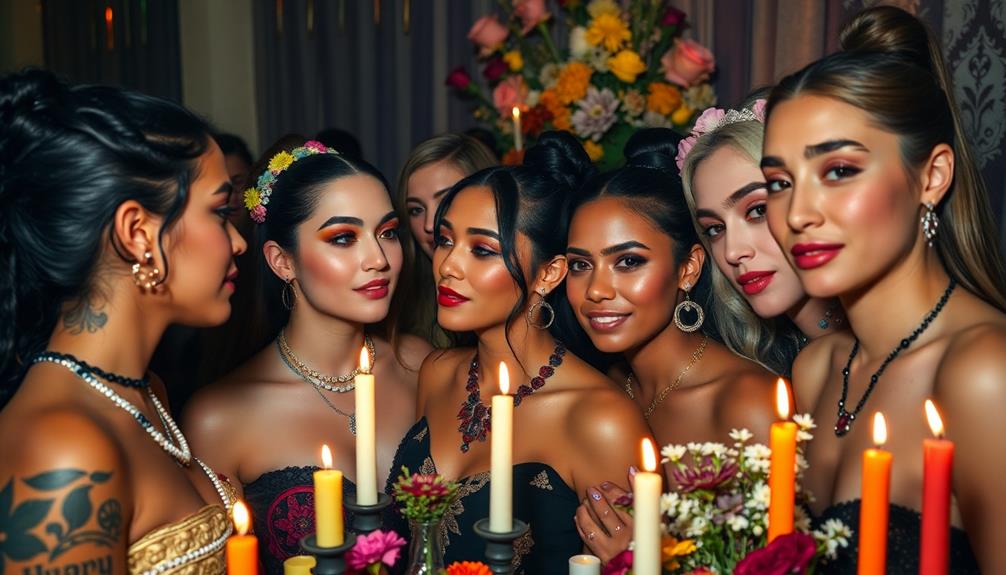
In today's society, piercings have evolved into significant rites of passage, marking the change into adulthood while celebrating individuality and self-expression. Many people view piercings not just as body modifications, but as a powerful representation of their journey through life and maturity.
- Piercings often symbolize personal milestones.
- Social media showcases diverse piercing experiences, making them more accessible.
- Traditional practices are seamlessly integrated into modern celebrations.
This modern interpretation emphasizes the cultural significance of piercings, aligning them with traditional coming-of-age rituals. For example, ear and septum piercings hold meanings of maturity and identity, reflecting how you express yourself in a world that values uniqueness.
Contemporary piercing studios embrace this shift, providing personalized experiences that marry traditional meanings with modern aesthetics.
As you navigate your own coming-of-age journey, consider how your piercing choices speak to your identity. These practices not only celebrate personal milestones but also connect you to a broader cultural narrative, making the act of piercing a profound ritual of self-discovery and expression.
Influence of Fashion and Media
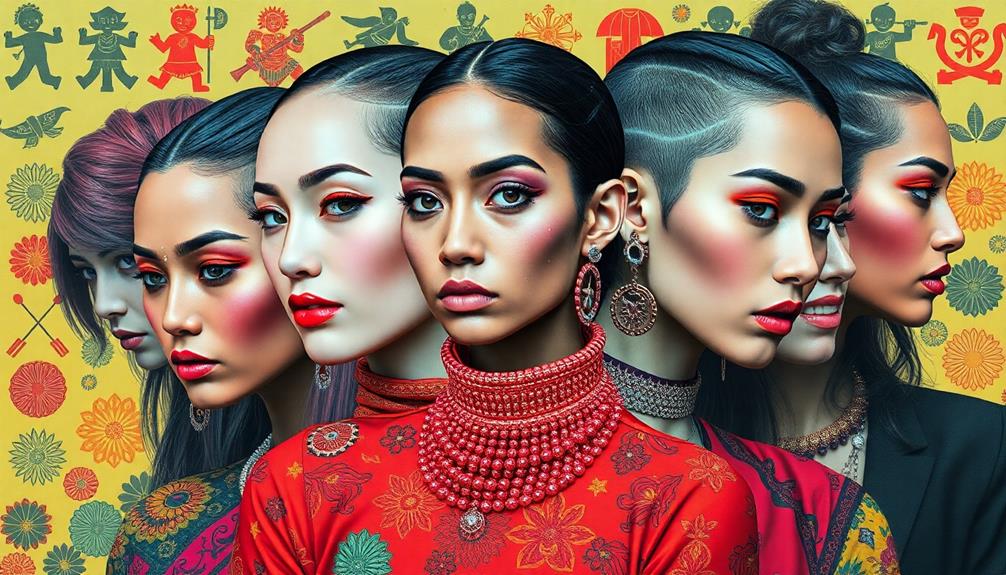
As modern interpretations of piercings continue to evolve, the influence of fashion and media plays a pivotal role in shaping perceptions and trends around body modifications. Fashion statements have shifted dramatically, with renowned designers like Louis Vuitton and Givenchy incorporating various types of body piercings into their collections. This acceptance reflects a broader cultural shift towards celebrating body modifications in mainstream society.
Social media platforms like Instagram and TikTok have amplified the visibility of piercings, allowing influencers to showcase diverse styles and inspire new trends. You might notice how celebrities, from Britney Spears to Christina Aguilera, popularized piercings in the early 2000s, markedly impacting public perception and leading to a surge in demand for different types of piercings among fans.
Moreover, contemporary fashion shows highlight styles such as septum and lip piercings, challenging traditional beauty standards and emphasizing their integration into high fashion.
This notable role of media and fashion in shaping attitudes towards piercings has made them more than just a personal choice; they're now a powerful form of self-expression that resonates across cultures.
Personal Identity and Expression
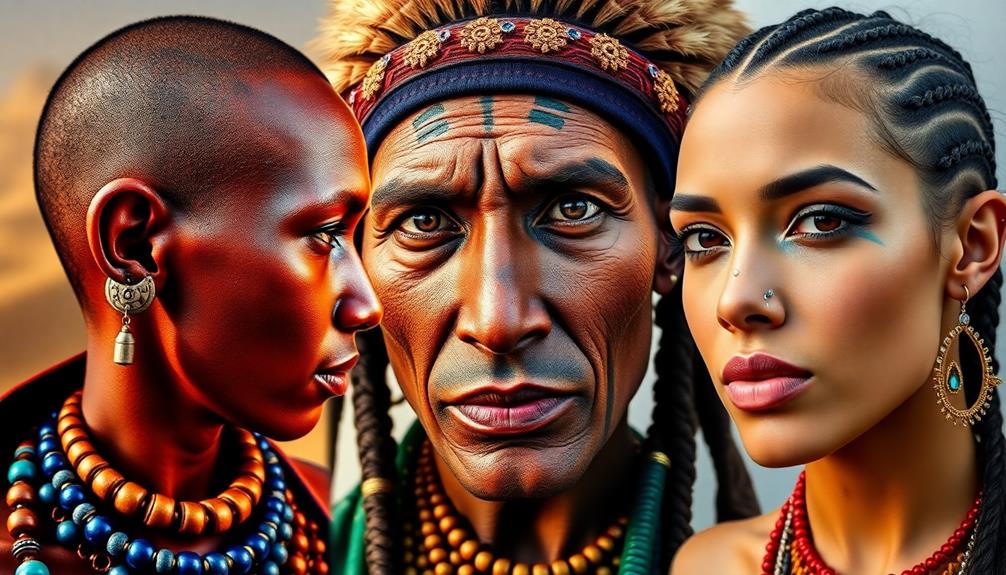
Through the ages, piercings have become powerful tools for personal identity and expression, transcending mere decoration. They often mark significant rites of passage, like the Maasai ear stretching or lip stretching in African cultures, signaling maturity and readiness for adult responsibilities.
These practices not only celebrate individual growth but also reinforce community bonds and cultural heritage.
Here are some ways piercings contribute to personal identity:
- They reflect your unique style and self-expression.
- They connect you to your cultural roots and heritage.
- They signify important life changes, enhancing your sense of belonging.
For many, piercings empower self-expression, allowing you to convey strength and individuality—just as septum piercings have historically done.
Each piercing can symbolize a personal journey, representing both rebellion and connection to ancestral traditions. They help you assert your identity and showcase your story to the world.
Ultimately, the act of piercing goes beyond aesthetics; it's a profound statement about who you are, where you come from, and how you choose to navigate your path in life.
Frequently Asked Questions
What Is the Cultural Significance of Piercings?
Piercings carry deep cultural significance, symbolizing identity, status, and belonging. They connect you to your heritage and community, marking personal milestones and changes, while also showcasing individual expression and adherence to traditional practices within various societies.
What Is the Significance of Piercings?
Piercings symbolize personal expression and identity. They often mark milestones in your life, representing strength, beauty, or cultural heritage. You might find that they connect you to traditions and signify important changes in your journey.
What Was the Original Purpose of Piercings?
Piercings originally served various purposes, like marking social status, enhancing beauty, and signifying spiritual connections. You've likely noticed how different cultures attach meanings to piercings, reflecting their unique traditions and values throughout history.
What Is the Cultural Significance of Ear Piercing Babies?
Ear piercing babies carries deep cultural significance. You might see it as a rite of passage, symbolizing community connection, health enhancement, or protection from evil spirits, depending on the cultural traditions surrounding the practice.
Conclusion
In exploring the role of piercings in coming-of-age rituals, you see how deeply rooted these practices are in various cultures. Did you know that nearly 83% of people aged 18-24 have at least one piercing? This statistic highlights the significance of piercings as a form of personal identity and expression. Whether for tradition or self-discovery, piercings serve as a powerful symbol of growth and individuality, bridging the gap between cultural heritage and contemporary life.

